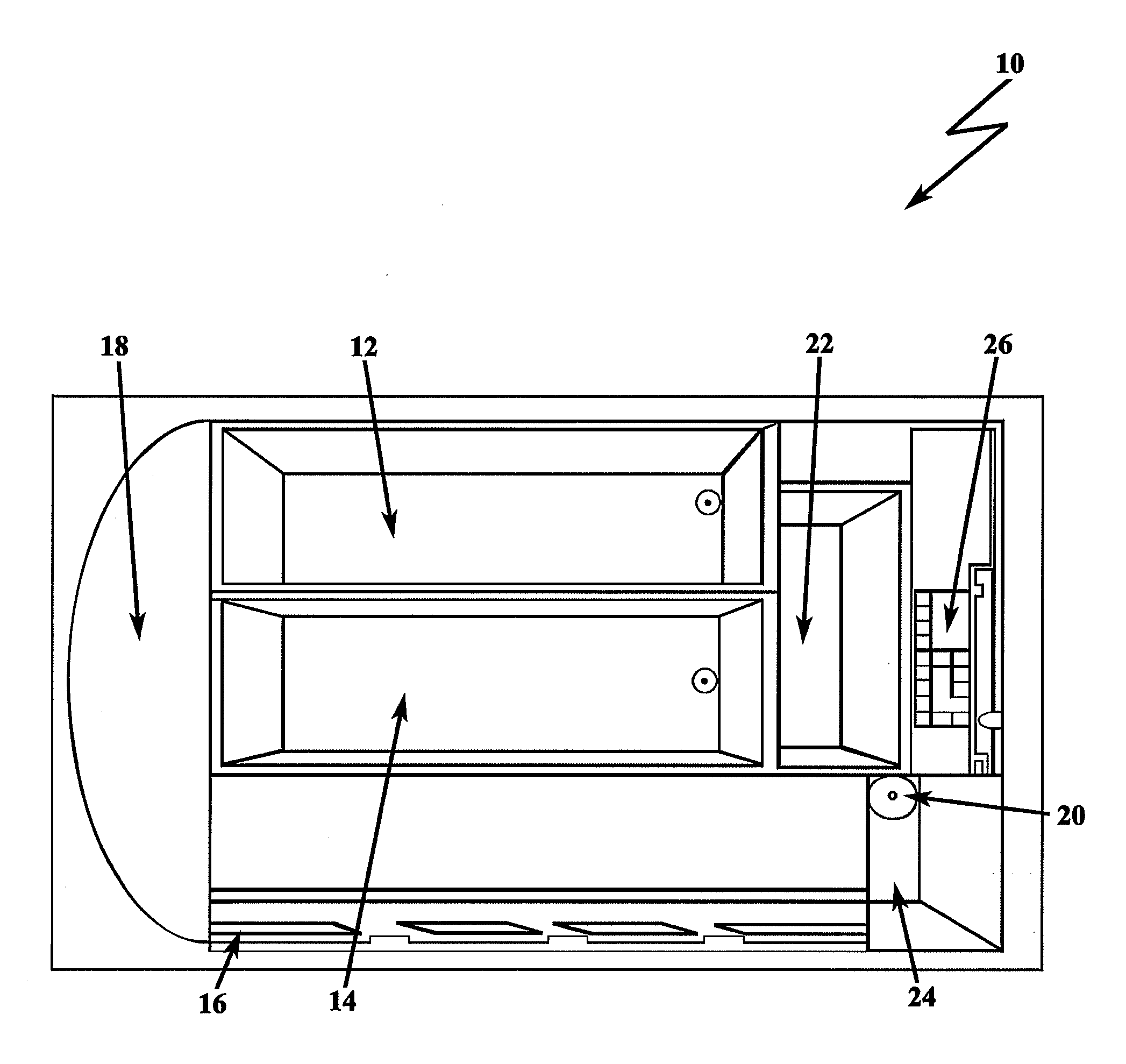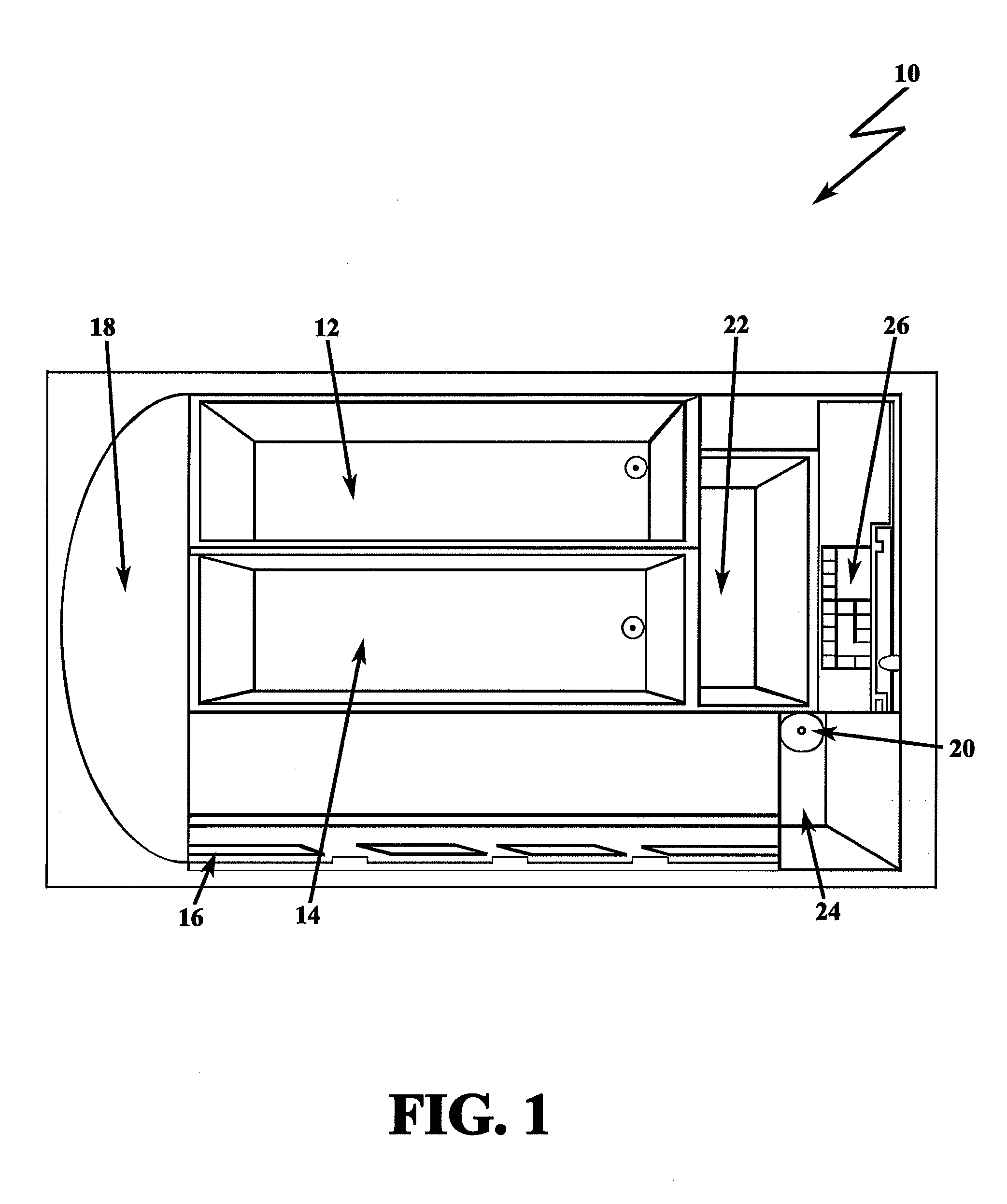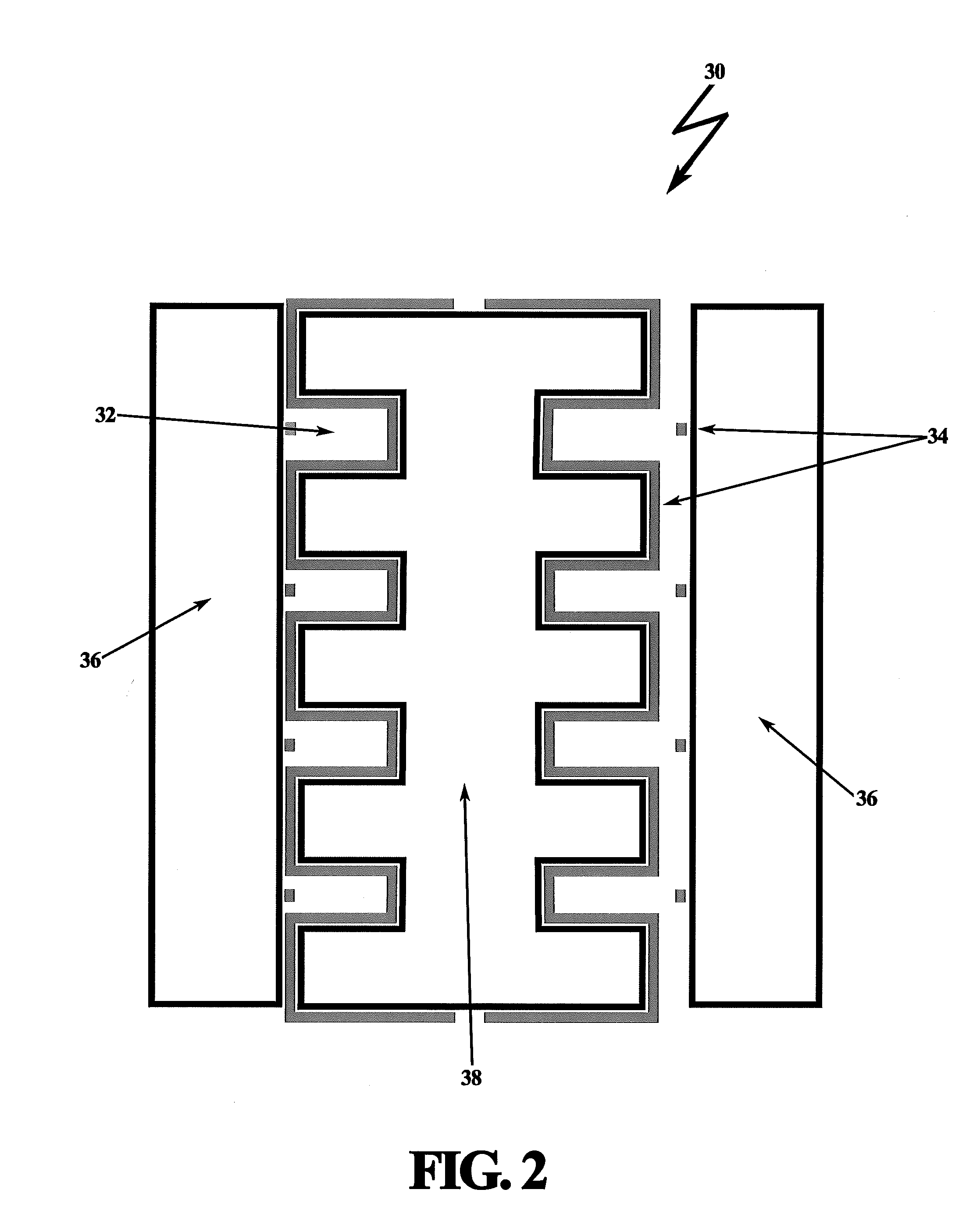Apparatus for Pathogen Detection
a technology for pathogen detection and apparatus, applied in the field of apparatus for pathogen detection, can solve the problems of high cost, inability to detect pathogens, and inability to detect pathogens, and achieve the effect of maximizing separation, differentiation, capture or release of analy
- Summary
- Abstract
- Description
- Claims
- Application Information
AI Technical Summary
Benefits of technology
Problems solved by technology
Method used
Image
Examples
Embodiment Construction
)
[0073]In describing the preferred embodiment of the present invention, reference will be made herein to FIGS. 1-24 of the drawings in which like numerals refer to like features of the invention.
[0074]The filtration system of the present invention performs pathogen detection using a plurality of dielectrophoretic modules of microfluidic channels with distinctive functionality and geometry to obtain separation performance which cannot be obtained in the prior art. Additionally, the present invention integrates a nano-scaled sensor with the filtration system. Advantageously, all components of the filtration system may be embedded, forming an integrated electronic-microfluidic circuit.
[0075]The assembled filtration system automatically transports, separates, condenses, and detects low amounts of particles, cells, and bacteria, or the like, from liquids in a portable configuration that minimizes false positives and negatives.
[0076]The present invention defines a robust method for separa...
PUM
| Property | Measurement | Unit |
|---|---|---|
| time | aaaaa | aaaaa |
| dielectrophoretic force | aaaaa | aaaaa |
| voltage potential | aaaaa | aaaaa |
Abstract
Description
Claims
Application Information
 Login to View More
Login to View More - R&D
- Intellectual Property
- Life Sciences
- Materials
- Tech Scout
- Unparalleled Data Quality
- Higher Quality Content
- 60% Fewer Hallucinations
Browse by: Latest US Patents, China's latest patents, Technical Efficacy Thesaurus, Application Domain, Technology Topic, Popular Technical Reports.
© 2025 PatSnap. All rights reserved.Legal|Privacy policy|Modern Slavery Act Transparency Statement|Sitemap|About US| Contact US: help@patsnap.com



